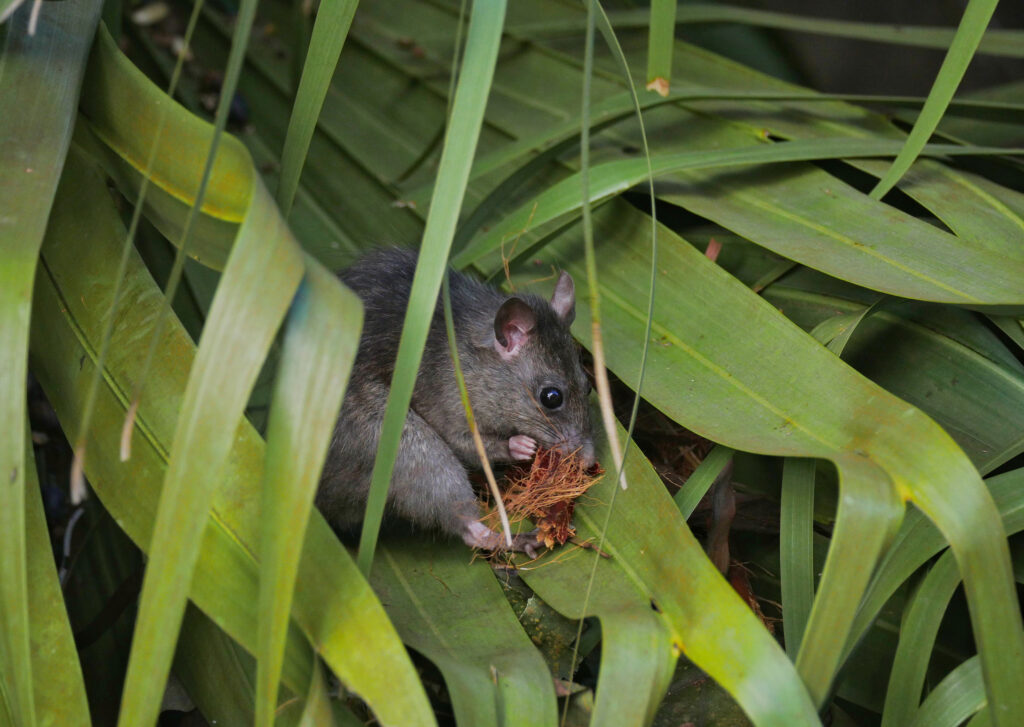Florida is renowned for its temperate climate, one that allows people to wear shorts and flip-flops year-round. Unfortunately, this famous climate is equally appealing to pests. Palm rats, also called roof rats or citrus rats, are but one pest that thrives in the sunshine state. While Norway rats are by far the most common rat in other parts of the US, in Florida, they are quite rare in comparison to the palm rat.
Palm rats or fruit rats have scraggly, coarse fur that is often black or dark brown. Their hairless, scaly tails are longer than their body and head combined. Adults are 12-14 inches long and weigh 5-10 ounces. Like most rats, palm rats are omnivores, but they have a strong taste for citrus fruits and nuts. These rodents are nocturnal, climbing fruit trees at night to feed. They are active all throughout the year.
Do Palms Rats Live in trees?
As their name suggests, Palm rats are arboreal, meaning they naturally live in trees. They build leaf and twig nests in citrus trees, and in especially hot weather, nest in thick mulch or shallow burrows under the tree.

How to Get Rid of Palm Rats in Trees
Dealing with Palm rats can be difficult, as these rodents are highly resourceful and persistent. But there are a few tried and true methods you can use to make your property considerably less inviting to them.
Habitat Management
When searching for living spaces, rats are looking for three things: food, water, and shelter. Habitat management, in essence, is about reducing rats’ access to these things to the greatest degree possible. Start by clearing your yard of any clutter that they might be attracted to. Eliminate debris and woodpiles, and thin vegetation so the rats have fewer potential hiding places. Make sure all fruit trees are isolated, and not touching fences, overhead wires, or the limbs of fellow trees, as Palm rats will run along these to reach your fruit tree. Prune fruit trees so that the base of the tree is exposed, which will make the rat uncomfortable and more susceptible to predators. Consider installing rat guards on your trees for greater protection.
Rat Trapping
If palm rats have become a bona-fide issue on your property, it might be time to rig up some rat traps. Trapping is in many ways preferable to the use of poisons, as there’s no risk of a poisoned rat finding its way into your home, dying, and causing an odor problem.
Snap Traps
The traditional wooden snap trap should serve you well in the war against Palm rats. Cheap and reusable, they can be effective against rat populations of any size. To protect your fruit trees, tie several traps around the trunk of the tree with triggers pointing down (expanded trigger traps are best for tree use). Since rats are wary creatures, familiarize them with the traps by baiting—but not setting—the traps for a few nights. Bait the traps with sweet fruit or nuts. Once the bait is readily eaten, then bait again and set the trap.
Since Palm rats prefer to stay off the ground, another good place to set traps is on the stringer boards of fences, and the horizontal support poles of chain link fences. Traps can be nailed straight to the stringer boards of wooden fences, but be sure to place a protective board above the trap so birds cannot be caught in it. To secure traps to the horizontal poles of chain link fences, put an eye screw in each side of the trap and use several heavy-duty rubber bands to secure it to the pole. Traps should only be set at dusk.
Poisons
If you use poison baits outdoors, they must be placed in a tamper-resistant bait station, as all rodenticide labels in Florida state that it is illegal to place poison bait where it could potentially be accessed by children, pets, livestock, or wildlife, unless the bait is secured in a tamper-resistant bait station. Such stations are usually not found in retail stores, however. Contact a pest control company such as Trutech for further information regarding bait stations.
Florida is a high-humidity state, so paraffinized bait blocks or pellets should be used in any outdoor application. Unfortunately, there are currently no repellants specifically for palm rats, and since most wildlife repellants cannot be used on human food plants (e.g., citrus), their usefulness in rat control on fruit trees is limited.
